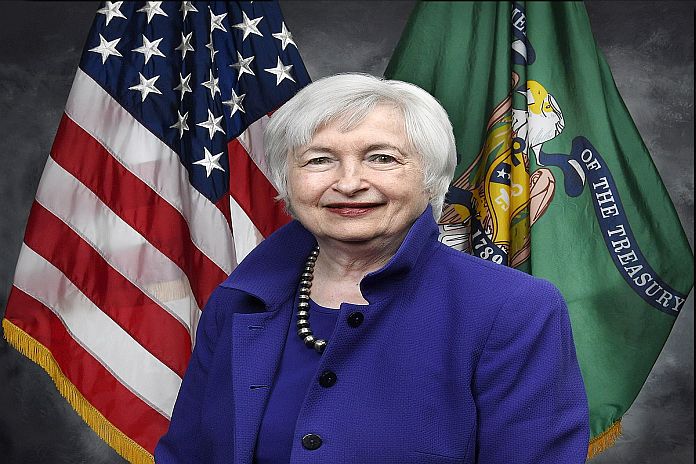– Secretary of the Treasury Janet L. Yellen at US- India Business Council Ideas Summit
By Janet L. Yellen
… I’m glad to join you to speak about our enhanced economic engagement with India – the result of a concerted effort by the Biden administration to strengthen the partnership between our countries. By this fall, I will have travelled to India more times than any other country as treasury secretary – including four times in the span of less than a year. Today, I want to touch upon the significant progress that we’ve made during these visits to bolster our bilateral economic relations – as well as how our two nations have worked together to improve the global economy.
Bilateral relations
First, we have made significant progress to strengthen our bilateral ties with India. The United States is India’s largest trading partner. In 2022, our bilateral trade reached over $190 billion. And we have significant cross-border investments and durable people-to-people ties as the two largest democracies in the world.
Our administration has taken concrete steps to build on this robust foundation. The first step has been enhancing our economic dialogue. The US-India Economic and Financial Partnership has been a centerpiece of our formal economic dialogue since the Global Financial Crisis. We have moved the EFP meetings from an annual to a quarterly cadence. And I have personally met with Indian finance minister Sitharaman over ten times since assuming office. This reflects the importance of our close collaboration with India on issues spanning the macroeconomy to climate finance to financial regulation.
We have also been close partners in responding to global disruptions and advancing our shared goal of a free and open Indo-Pacific. We are working closely with India, Australia, and Japan through the Quad. And we are writing new rules for the 21st-century economy with India and a dozen other countries through the Indo-Pacific Economic Framework. Last month, IPEF member countries reached a first-of-its-kind international supply chains agreement under the Framework.
Supply chain resilience has certainly been a major goal of our recent cooperation. After the shocks of recent years, the United States is pursuing a policy called “friendshoring” to deepen integration with our trusted trading partners. Our aim is to expand trade ties with the broad array of countries we can rely on – in order to create more redundancies in our critical supply chains. India is one of our reliable trading partners. Among other initiatives, we are working to connect new communities to the global market. And we are working to do so in a way that helps these communities move up the value chain.
Looking forward, I believe that we have significant potential to grow trade and investment between our nations. Both of our countries are advancing what I call “modern supply-side” policies – investing in human capital, physical capital, and science and technology to boost our long-term economic potential.
Prime Minister Modi has launched a massive infrastructure program – just as our country is beginning to see the early results of president Biden’s Bipartisan Infrastructure Law. India’s infrastructure investments have significant potential to boost productivity and increase the efficiency of trade between our two countries. Treasury is actively working with the Indian government to help them attract more private sector capital to close India’s infrastructure gap. Both of our countries are also pursuing leadership in clean energy technologies. Together, I believe our innovations can help push down the cost curves of new technologies and accelerate the world’s transition to a net-zero economy.
Collaboration on global challenges
Second, beyond our bilateral relationship, we are working closely with India during its G20 presidency on global economic issues. I believe that our close collaboration is showing the world how advanced and emerging economies can bridge policy differences and make progress on our shared policy objectives. When India and the United States work together, we can add significant momentum to important efforts.
During the past six months, we have made progress across a number of areas. Debt distress in the developing world continues to pose a risk to macroeconomic growth and stability. Much more needs to be done to provide timely and comprehensive debt treatments. But we have taken steps forward on urgent cases like Sri Lanka – where India’s proactive actions have been critical to supporting the authorities’ reform efforts. We are continuing to push for urgent action in other cases as well.
We’ve also made progress on our collective efforts to evolve the multilateral development banks to better address global challenges – like climate change, pandemics, and fragility and conflict. And we are working together to shape the digital economy. We are collaborating with India to deliver tangible outcomes on the G20’s work to enhance cross-border payments – as well as our financial inclusion efforts to connect the unbanked around the world.
There is much more to do. As you continue your work, know this: you have a strong and reliable partner in me and the US treasury department.
I look forward to supporting American businesses in India. And I appreciate you letting us know where we can provide greater certainty and guidance to facilitate economic and commercial activity between our two countries.





